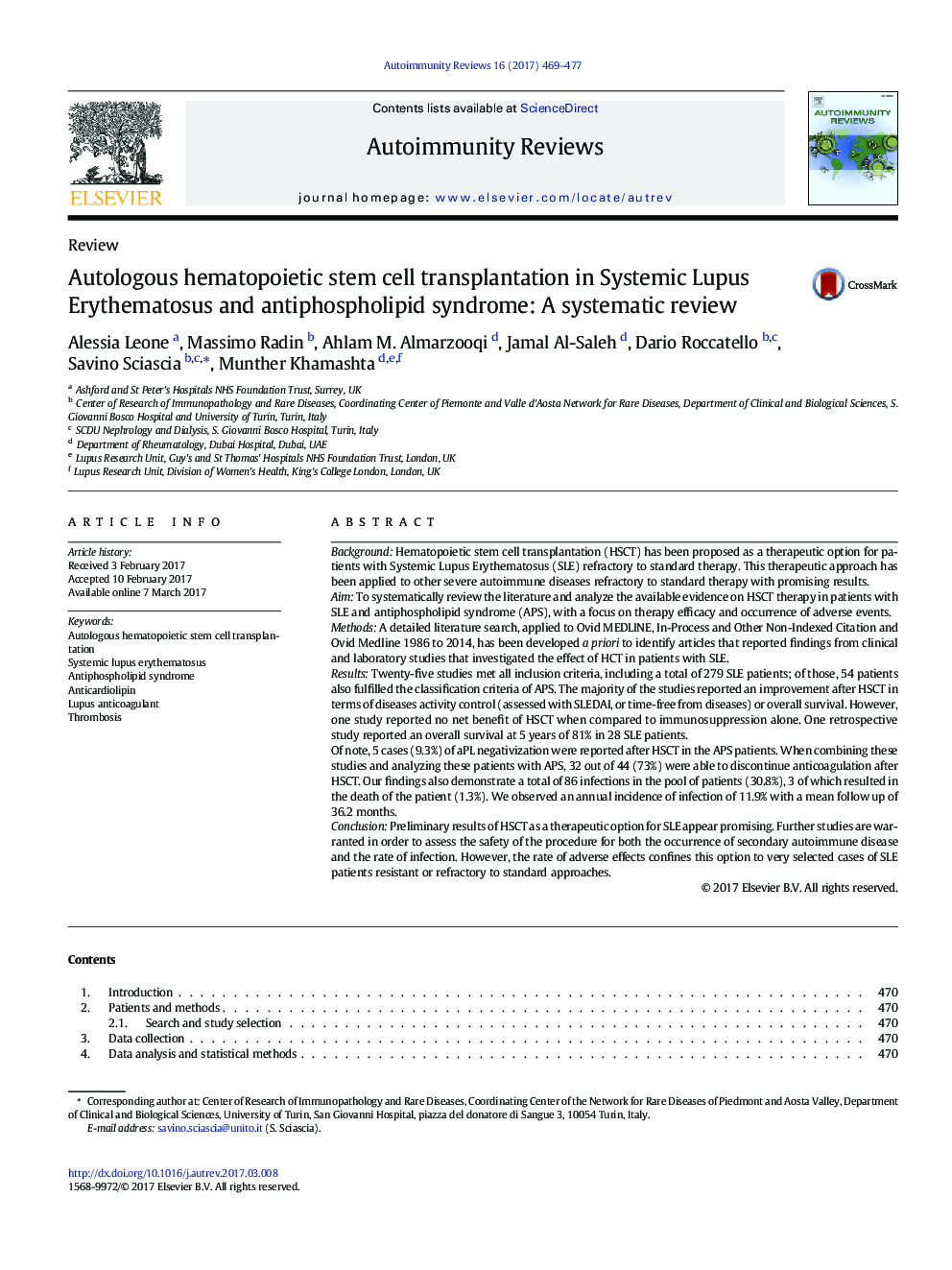| کد مقاله | کد نشریه | سال انتشار | مقاله انگلیسی | نسخه تمام متن |
|---|---|---|---|---|
| 5665403 | 1407748 | 2017 | 9 صفحه PDF | دانلود رایگان |
- Hematopoietic stem cell transplantation (HSCT) has been proposed with promising results as a therapeutic option for patients with severe autoimmune diseases refractory to standard therapy.
- The rate of adverse effects confines HSCT to very selected cases of patients with Systemic Lupus Erythematosus resistant or refractory to standard approaches.
- When combining data focusing on patients with APS, we observed that 32 out of 44 (73%) were able to discontinue anticoagulation after HSCT.
BackgroundHematopoietic stem cell transplantation (HSCT) has been proposed as a therapeutic option for patients with Systemic Lupus Erythematosus (SLE) refractory to standard therapy. This therapeutic approach has been applied to other severe autoimmune diseases refractory to standard therapy with promising results.AimTo systematically review the literature and analyze the available evidence on HSCT therapy in patients with SLE and antiphospholipid syndrome (APS), with a focus on therapy efficacy and occurrence of adverse events.MethodsA detailed literature search, applied to Ovid MEDLINE, In-Process and Other Non-Indexed Citation and Ovid Medline 1986 to 2014, has been developed a priori to identify articles that reported findings from clinical and laboratory studies that investigated the effect of HCT in patients with SLE.ResultsTwenty-five studies met all inclusion criteria, including a total of 279 SLE patients; of those, 54 patients also fulfilled the classification criteria of APS. The majority of the studies reported an improvement after HSCT in terms of diseases activity control (assessed with SLEDAI, or time-free from diseases) or overall survival. However, one study reported no net benefit of HSCT when compared to immunosuppression alone. One retrospective study reported an overall survival at 5Â years of 81% in 28 SLE patients.Of note, 5 cases (9.3%) of aPL negativization were reported after HSCT in the APS patients. When combining these studies and analyzing these patients with APS, 32 out of 44 (73%) were able to discontinue anticoagulation after HSCT. Our findings also demonstrate a total of 86 infections in the pool of patients (30.8%), 3 of which resulted in the death of the patient (1.3%). We observed an annual incidence of infection of 11.9% with a mean follow up of 36.2Â months.ConclusionPreliminary results of HSCT as a therapeutic option for SLE appear promising. Further studies are warranted in order to assess the safety of the procedure for both the occurrence of secondary autoimmune disease and the rate of infection. However, the rate of adverse effects confines this option to very selected cases of SLE patients resistant or refractory to standard approaches.
Journal: Autoimmunity Reviews - Volume 16, Issue 5, May 2017, Pages 469-477
